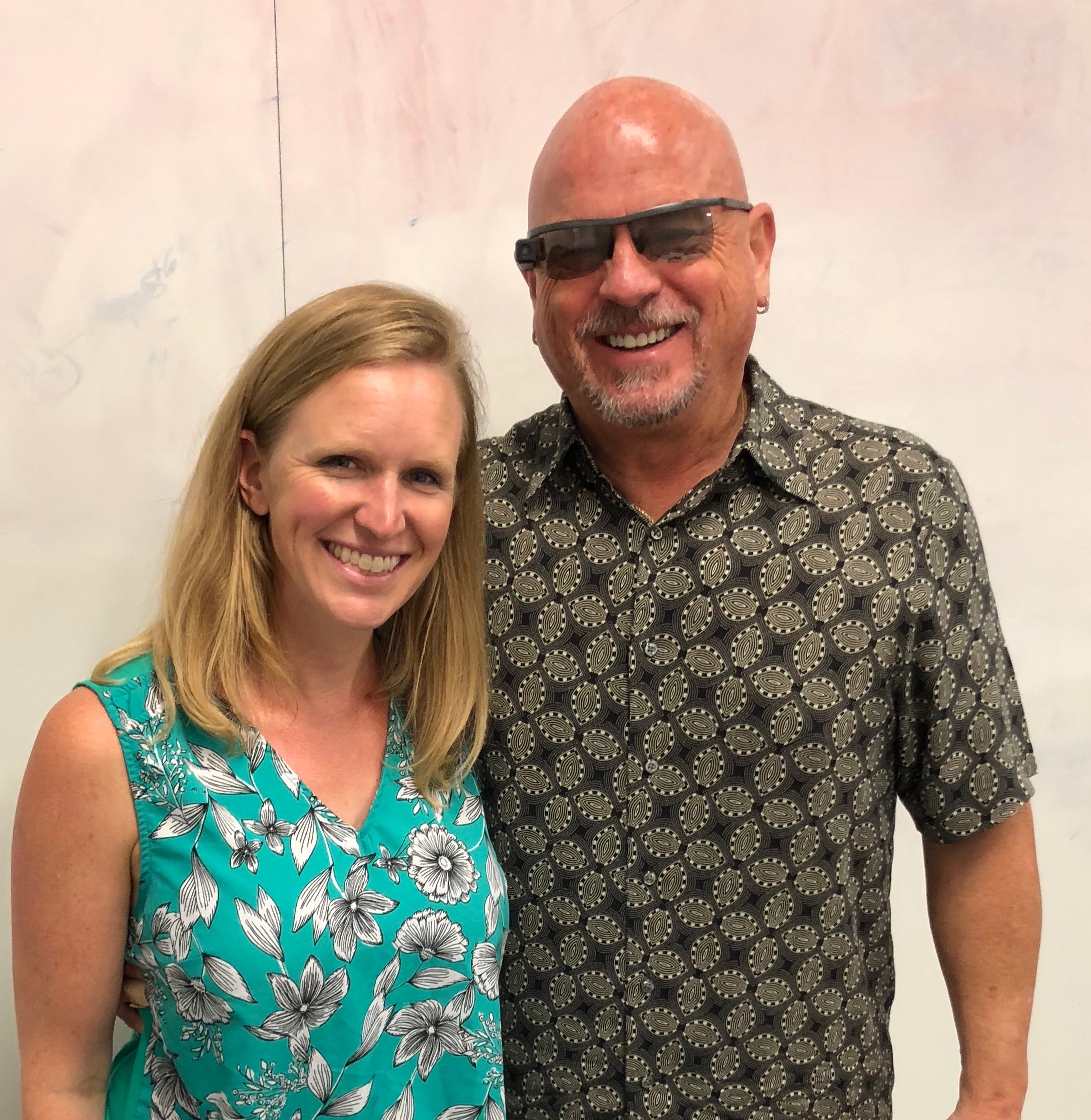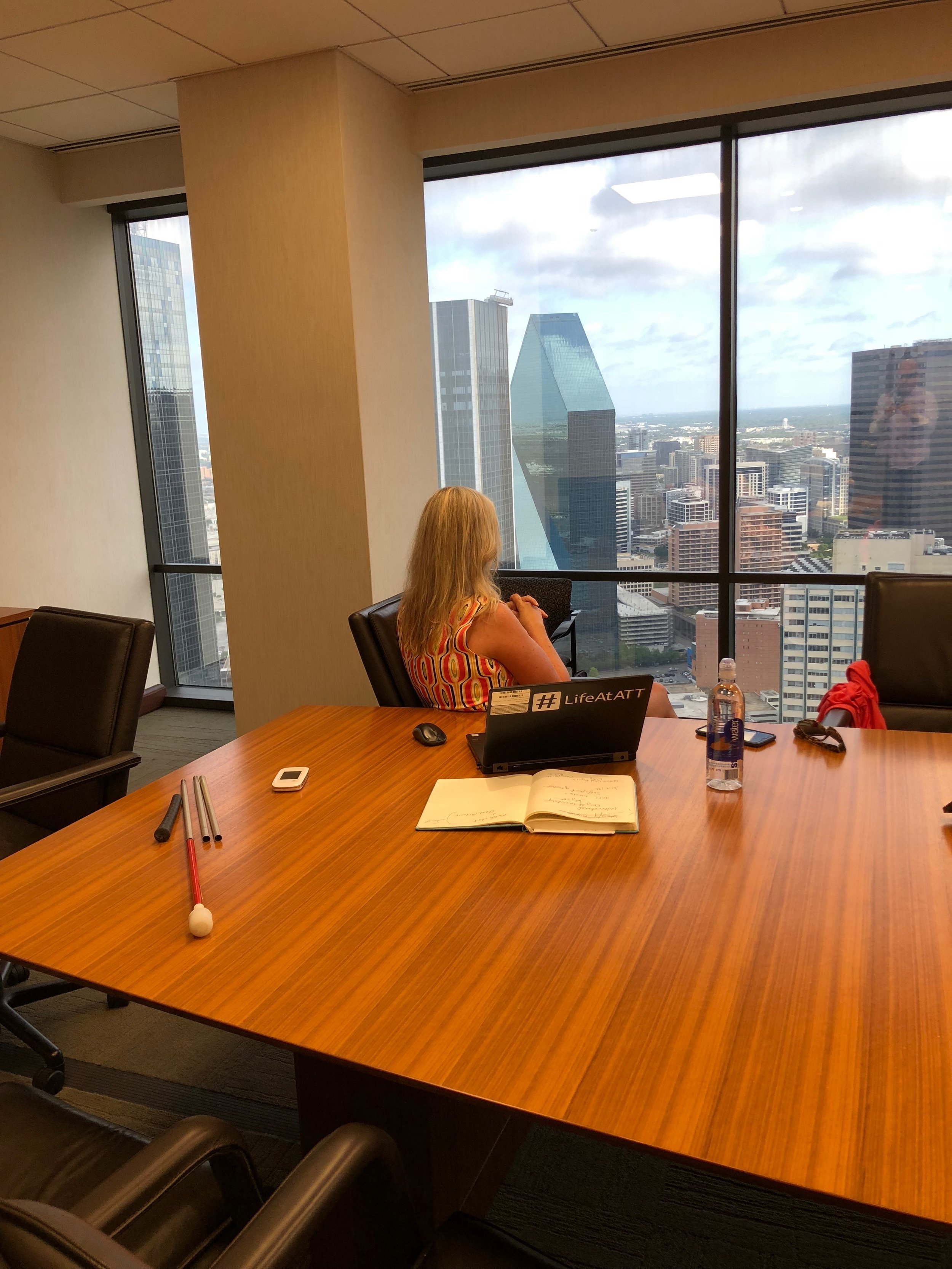After meeting with Suman Kanuganti of AIRA and Chris Penrose of AT&T I was asked to return the later that week to be interviewed by Amy Blankson with Forbes. My wife Kelly recognized the name because Amy’s brother, Shawn Achor, had written one of Kelly’s favorite books, “The Happiness Advantage,” a book we had recently given to our son Zach on his recent visit to Dallas. Along with being a Journalist with Forbes, Amy is also an accomplished author herself. She wrote “The Future of Happiness.” Which is a book we happen to be reading before I got the call for the interview. I told Amy that this was going to be fun because we were familiar with her brother’s work as well as hers adding that Kelly and I were true fans of “Happiness.” We spent some time talking about the subject and how we soaked up any and all material that enlightened people on their path to happiness. It is important to us as individuals and as parents and grandparents because you lead by example and we want to be happiness leaders. I found Amy to be one of the most positive people I have met and someone who in fact leads by example. This was “Fixin” (a Texas word) to be a fun interview!
Amy began by complimenting my writing, something I am uncomfortable with, it’s a long story and this isn't the venue to discuss the judgement writers have when it comes to their work. She asked what life was like before AIRA and I told her the best explanation of that was contained in my original AIRA story which we talked about at a deeper level. She then walked me through what lead up to me getting the AIRA glasses, what my impression was of the technology, how it fit, how it worked for the user, was the user experience seamless or difficult? Then she asked about my, “#whatsnext” tagline that I had put on my article. Her next question was naturally, “What was next for me?” I explained that I had many dreams, maybe to travel, finally by myself. I told her that I had a grandson, Colton visiting and I wanted to read him a bedtime story. Yes, Kelly and I went out and bought two new books and yes, I will be practicing reading them with an AIRA agent. I hope to share the video of that with y’all in the future.
Amy wanted a demonstration of how the tech worked so I dialed into AIRA and Monica answered. I proceeded to take the group on a walking tour of the floor we were on stopping to look at art as Monica described it, windows overlooking the city again with full rich descriptions of what was being seen through the glasses. Monica guided me flawlessly around the floor dodging people, making turns and avoiding landmines like coffee tables, trash cans, those things that always seem to rise up to bite me. Monica took us back to the conference room we had started in and I said my thanks and ended the AIRA session. Amy was simply blown away, fascinated, and continued to ask questions, mainly about the original story I had written. This time with a new sense of what exactly had happened. At this point I want to tell you that hopefully I will be able to share that original story with you soon, the article that sent me on this “Magical Mystery Tour” I am now on.
Now came the interesting part. Amy ended the interview by asking me an “Out of the box” question. “Eric, now that you have used this technology, what other applications do you see for it other than just being a tool for the blind.” Remember, to this point in time nobody had asked a question like that. As a matter of fact, every single question revolved around little old me and what the glasses meant to my life. I sat back in my chair and thought. My father, who is a Doctor, came to mind and almost immediately after that thought a young lady by the name of Maria popped in my mind as well. Maria Lensing leads the sales team in their AT&T healthcare segment. I had met her when I went to the Global Accessibility Awareness Day event a couple days earlier and she interviewed me for a weekly video she sends out to her team. So, this is what my mind came up with. There were two use cases that didn’t involve the blind. The first was imagining a rural Doctor who ran a simple family practice. Maybe he has a patient who comes in and presents with something unfamiliar to the family Physician. He could put on the glasses, dial into a service to be connected with another doctor maybe a specialist, for a consult. The specialist could see in real-time the patient and like in most things two heads working on a problem is better than one. But wait, I wasn’t done, my mind was now fully engaged in full idea mode. I then said, “What if….” What if every ambulance had a pair of these glasses in their ambulance or paramedic vehicle. I was aware of the “Golden Hour” which is the first hour of an accident during which time if the patient can be stabilized their chance of survival goes up exponentially. I imagined the paramedic could put on a pair of these glasses and be immediately connected to the doctor on call at the Trauma center or hospital ER where the patient would be transported. The doctor could help the paramedic stabilize the patient, they would know exactly what was going to be coming through the door and all of this because of the real-time abilities of AIRA. There were more use cases racing through my mind. There I sat, a blind man with Tech that was changing his life imagining the potential this could have in so many areas. The moment is indelibly marked, stamped on my brain that the glasses covering my eyes could open the mind’s eye to limitless possibilities apart from their original purpose. It made me feel good since as someone who has been in the business world in a previous life, alternative use cases increase the long-term viability of a product. As we wrapped up the interview I hugged Amy and expressed my appreciation for her taking the time and having the interest to talk with me. The Forbes interview which has since been published, is linked below.
But my day didn’t end there. Later, I was interviewed by Jonathan Moore who works in Employee Communications at AT&T. Jonathan was writing and article for “The Insider”, an internal communication for the entire AT&T organization. This interview was fun since it was done via an audio bridge across the pond. Jonathan is in the UK and as we talked I learned that he is Scottish, which was fun for me since my father has traced our family’s history and we do in fact have Scottish origins. So, on one of the top executive floors at AT&T with what I was told was a phenomenal view of the city I sat, talking to my fellow “Scotsmen,” sharing with him many of the same points you have already read about to this point. This was an exciting interview for me since the announcement had been made that AIRA was going global. I belong to many blind and visually impaired groups with many friends living in other countries so the prospect of these blind compatriots having this Tech available to them on the horizon is simply sublime.
I am sure that there will be more interviews, more interactions moving forward but this brings to close this series on “MY AIRA Life.” Don't get me wrong, along the way I will continue to write about what AIRA is doing for me. An example of that is telling the story of reading a book to one of my grandchildren for the first time in my life, or heading to the airport to travel solo. The most important takeaway I want you all to understand is that AIRA has given me a new confidence, a sense of freedom and spontaneity. This is something that the blind person loses, something that is a regret, however, with AIRA, the doors are open. Check back to read the story that kicked all of this off. I hope to publish here soon. If you haven’t yet read the stories before this series, please hit the back button and find the series called Building Walls.” It chronicles a piece of my life before AIRA. If you have any questions or requests, visit the portion of the website with the “Contact Me” option, I promise to always answer.
Special thanks to Amy Blankson from Forbes, it was an awesome pleasure to meet you and be part of your “Happiness!” Also, special thanks to Jonathan, thanks for having the patience with me that you did. And last but by no means least, thank you to Lori Bachovchin, AT&T External PR and Meghan Danks, AT&T Corporate Communications for coordinating these interviews. These are the people behind the scenes who never seem to get the credit they deserve, you are all awesome!
@aira #aira #myairalife #onmyterms #whatsnext #jabfund
Forbes Article by Amy Blankson
Amy Blankson a Journalist for Forbes and the Author of "The Future of Happiness" and I. And yes that is a photo I took of Kelly setting up the bridge for the interview with Jonathan Moore in the UK!! The truth is I had to take 50 pictures to get one good one!


